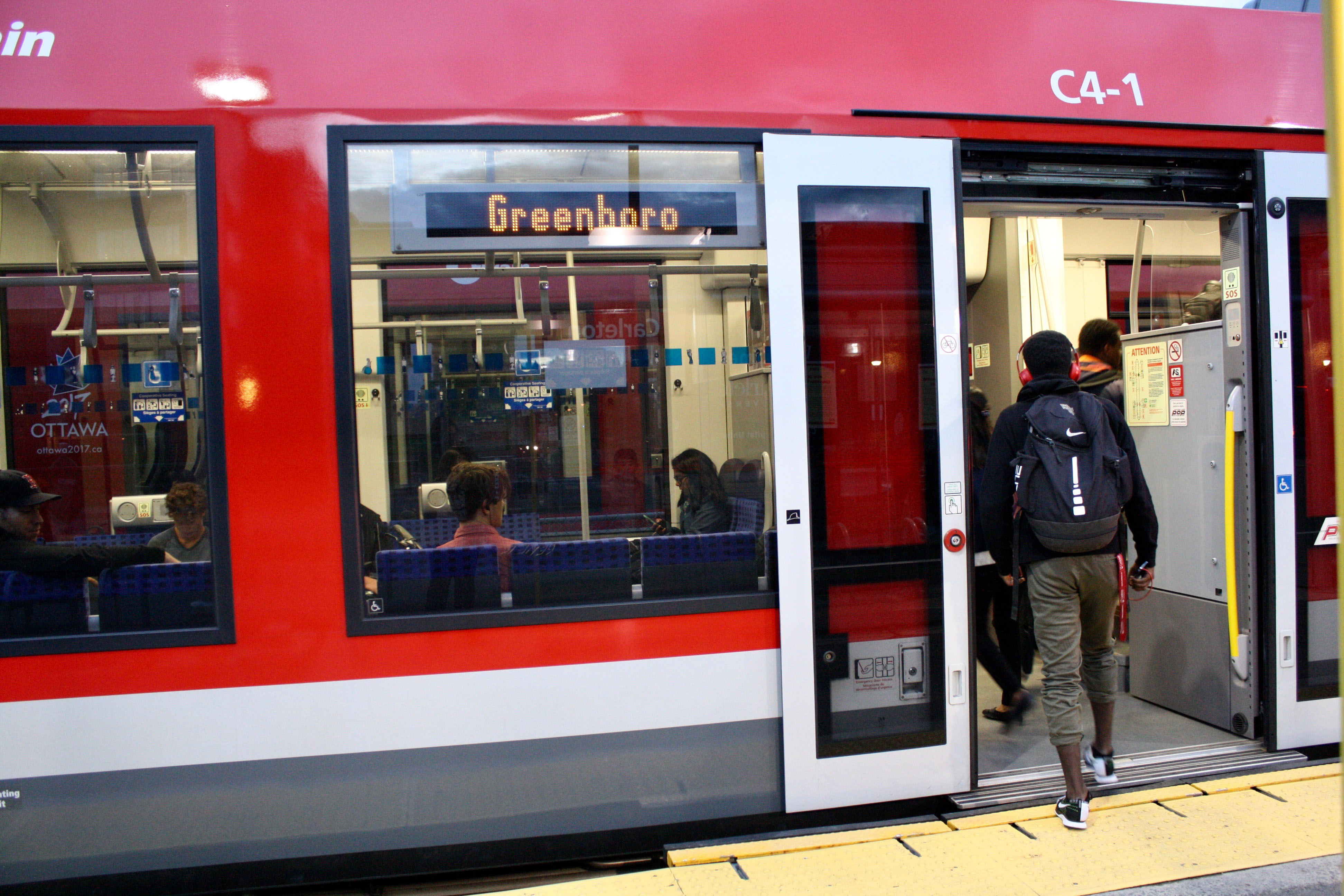Students at Carleton are experiencing longer wait times for the O-Train than promised after the City of Ottawa’s $60 million investment in March 2015.
The improvements promised the train would come every eight minutes, faster than the previous time of every 15 minutes, but currently comes around every 11 minutes, according to the city transit department.
David Chernushenko, the city councillor for Carleton, said there haven’t been any complaints from Carleton students regarding the slower O-Train, but said it is unfortunate it is not a fast as promised.
“It is less reliable than anticipated, which is frustrating, and may even cause some to drive, which would be a very unfortunate consequence,” he said over email.
Michael Morgan, director of rail operations for the City of Ottawa, said via email that the original frequency goal of every eight to 10 minutes was not possible due to a variety of factors.
“[It] did not provide an adequate buffer for minor operational delays,” Morgan said.
First-year student journalism Kayla Meirinho said she relies heavily on Ottawa’s public transportation system, and is not impressed with it thus far.
“[The O-Train] doesn’t come very often, and a lot of times it’s overcrowded when it does come, because it comes so few times,” she said. “[It’s] always taking like 20 mins of waiting, and if I have to get somewhere I’m always late.”
“I use the O-Train right in the morning and right in between 4:00-5:00 p.m. during rush hour when there should be a lot of trains going, but there aren’t” she added.
In comparison to the Toronto Transit Commission Subways from her hometown, Meirinho said that “[in Toronto], there were TV’s showing wait times and when the train comes, usually nine minutes. But in the mornings, 8-9:30 a.m., it comes every three minutes, and when I go home, between 3:30-5:30 p.m., it’s three to five minutes.”
On the contrary, Joel Zieroth, another first-year psychology student at Carleton, said he is content with the O-Train service. In his hometown of Dryden, there weren’t any means of public transportation. He uses the O-Train six times a week, however not during its busy rush hours.
“Honestly, I don’t really mind how often they come because sometimes buses can take like half an hour,” Zieroth said.
Despite the mixed reviews, Morgan said the system continues to provide a high level of reliability and comes 98 per cent of the time.
“The expanded system has resulted in increased capacity, reduced wait times, and improved reliability and comfort for passengers,” he added.
Morgan said OC Transpo is making incremental technical changes, including around Carleton, to try to improve service.
“OC Transpo is reviewing some specific signal issues with our signal maintainer to improve reliability and reduce travel times,” he said. “However, any substantive change to the travel times would need to come as part of Stage II of the City’s [Light Rail Transit] plan.”






